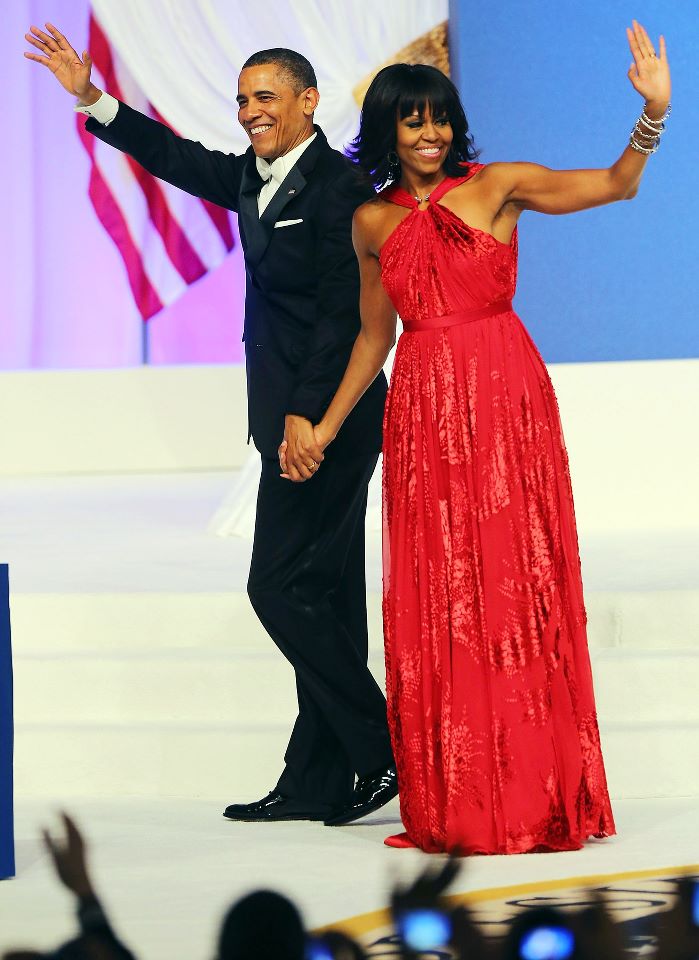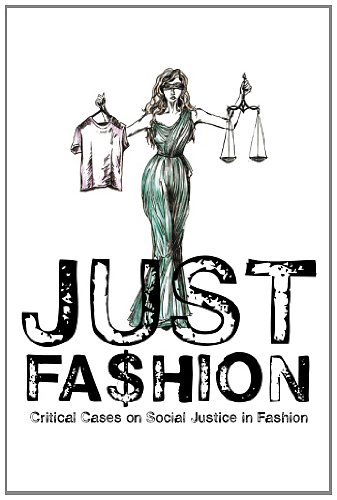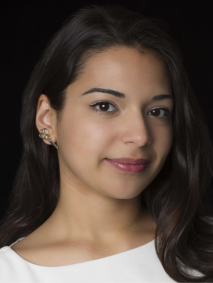Fashion Studies
Parsons School of Design's MA Fashion Studies
First Lady Fashion: The Power of Dress
Last night for Barak Obama’s second inauguration as Jennifer Hudson sang the classic Al Green song, “Let’s Stay Together,” Michelle Obama’s final dress choice was revealed. The First Lady wore a stunning, brilliant red gown by Parsons alum Jason Wu. Wu also designed her dress for the 2009 inauguration. “When I saw it, I was just floored. I just couldn’t believe that she chose me for the second time…I am so proud of it,” Jason Wu told CBS News.
In addition to the two inauguration dresses by Jason Wu, throughout the past four years Michelle Obama has shown a particular affinity for Parsons-trained designers. She’s worn looks by at least two dozen of them, across a range of high-end and mainstream consumer fashions, including Derek Lam, Doo-Ri Chung, Marc Jacobs, Tom Ford, J. Crew’s Jenna Lyons, and many more.
Leading up to the final unveiling of the inauguration gown, CBS News’ Susan McGinnis called upon Hazel Clark, Research Chair of Fashion at Parsons and a professor in the MA Fashion Studies program, to share her thoughts on the First Lady’s choice for the second inauguration. In the CBS News video, Mystery Over First Lady’s inaugural gown, Hazel Clark says, “I will be fascinated by the color choice.” The color choice could symbolize a certain political party, while the degree of opulence could be sensitive to the tough economy, reflecting the mood of the country. Incidentally, color did prove to be statement-making. Michelle Obama was the first Democratic First Lady to wear red to an Inaugural Ball in 100 years.
Mrs. Obama’s clothing has often reflected her democratic and equalitarian sensibilities. There is a studied and deliberate authenticity to her dress—true to her middle class upbringing on the South Side of Chicago. There seems to be no false airs or attempts at fabrication. Her dress and her message are populist and democratic. Because of her accessible elegance, many look to the First Lady for guidance, assurance, and commonality.
This past week, The New School News blog interviewed Hazel Clark and Simon Collins, dean of the School of Fashion at Parsons about how Michelle Obama has used fashion to help shape her image as well as how she has benefited the American fashion industry:
Why is fashion a thing that we talk about when we talk about first ladies?
Hazel Clark: The First Lady in this country is very much the female figurehead. It’s also playing very much on celebrity culture – the First Lady needs a strong personality and a strong image. There’s obviously a parallel with Princess Kate and prior to that Princess Diana in the UK. Michelle just fits that role really, really well. She’s relatively young, she’s stylish, and so on. She’s kind of perfect in that way for media purposes.
There have been studies that have said that having Michelle Obama wear your dress is worth about $14 million to a designer.
SC: I would respond to this with a recent quote from Jason Wu, who said having Michelle Obama wear your dress is worth zero unless you can do something about it. It’s just one of many different things that will help your business, if you are in the position to be able to do something. If you make one dress and it’s not cost effective to make another one, then you’re done and out of business, it’s worth zero. But it could be immensely valuable to J.Crew. It’s one part of your PR campaign, a very big one, if you capitalize on it.
In the campaign of 2008, Michelle Obama had a negative profile among a lot of people. She’s been able to completely turn that around. How do you think her fashion choices have helped change her image? Or has it been other things?
HC: I think partly it’s because she’s made very kind of realistic choices, actually wearing what real people wear. There’s a sense of being very much one of us, so I think that’s been very clever. As well as making choices that are not far from what she would wear if she were not the First Lady: wearing flats, wearing cardigans. I think she’s seen as a real, thinking, everyday, intelligent working woman. She’s kept herself in that position.
SC: One thing I think proves her genuine interest in fashion is that she doesn’t just wear American designers. I’m a vocal supporter of the fact that she wore Alexander McQueen when she went to China, and any push back from the American fashion industry is just ridiculous. She wants to wear what she wants to wear, and if that’s a Commes de Garcon cardigan, good for her.
In general, do you think her choices have any impact on people studying to be designers now? Say, students at Parsons?
SC: No. We should be realistic about the influence she has. She influences some people, but nobody wants to build their career around designing for the First Lady. They want to build their career around being fashion designers. If she wears their clothing, that’s wonderful, it’s an incredible honor. But it’s not what you’re there for.
HC: I think it’s much more about being a woman of the people. She’s been very good at identifying with regular people, with the consumer. But I don’t think with designers. She would look completely different if that were the case.
HC: Simon, I wanted to ask you a question. Is it a coincidence that during the period that during this past presidential term, J. Crew has also come up? Obviously, Jenna Lyons, a Parsons graduate, has worked very hard on that. But, you know, five years ago, would they have had such a profile with Michelle Obama then?
SC: I’d like to think that she’s wearing it because it’s good, and J. Crew now looks so much better than it did five or six years ago. They produce quality products, and she recognizes quality. I think that goes hand in hand.
HC: My point is more that J. Crew is much more stylish now, and much more interesting, than it was five or six years ago. Maybe she wouldn’t have chosen them then, when they were preppier and more safe.
What do you think it is about Parsons particularly that makes us produce so many designers that she’s gone on to wear?
SC: Well, the bottom line is that a large percentage of the industry went to Parsons. If you went into Barney’s, and you counted the American designers there, a large percentage would be Parsons graduates, and the same is true in Bergdorf’s. So, if she just went shopping and happened to pick up 10 designers completely randomly, they’d probably be from Parsons.
I don’t claim that we’re brilliant, but the best students do come to us. And we give them the best education. And the combination means that they go out to become as successful as they are. And we’ve been doing it a long time, so we know what we’re doing. We’re always evolving, but we know what we’re doing. And, in interviewing the designers that came through the school, they all came because someone was here before them. Donna Karan came because she was inspired by Claire McCardell. Narciso Rodriguez was here because he was inspired by Donna. It all begets itself.
HC: Also, some of the designers she’s worn have been our BFA graduates, but some are our AAS graduates. So, it’s not program-specific.
HC: Also, Simon, I wanted to ask what color do you think she’ll wear to the Inauguration? I thought it was interesting that she wore white the first time – I don’t know far the symbolism went, but, you know, white, the virginal bride.
SC: She’s got to wear red this time, hasn’t she?
HC: I think she’ll wear blue. Something like turquoise blue. Obviously, it’s the color of the Democratic Party. I was also thinking she might wear gold…
SC: That’s a bit opulent, though, isn’t it?
HC: Well, yes, but the Toledo n[dress, which she wore to the public swearing-in] was a bit gold last time. I think that would be interesting.
SC: I hadn’t thought about it, but it’s an interesting question.
HC: We could put bets on the table!
SC: I can’t see her wearing white. I think blue is a good option.
Or is blue too partisan?
SC: Well, thankfully, finally, he’s sticking up for himself a little bit; “I’m a Democrat, I don’t like it, so I’m not going to do it.” Maybe there should be a little of that. So maybe she will do that.
The interview with Hazel Clark and Simon Collins was originally published here.




